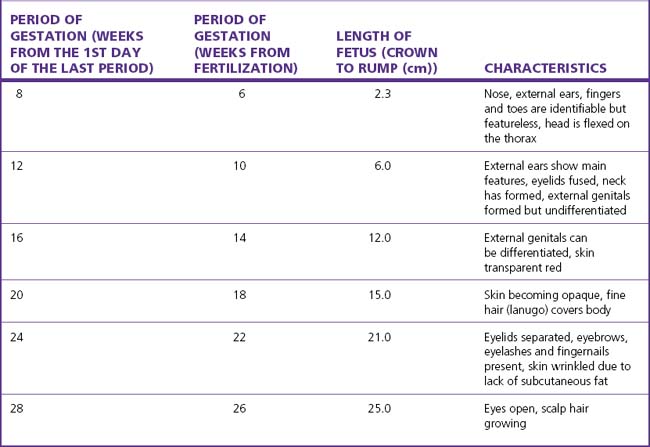Chapter 4 Embryo and fetus
By the seventh week after fertilization most of the organs have formed and the embryo becomes a fetus. The early growth of the fetus is shown in Table 4.1.
NUTRITION
From the 30th gestational week the fetal liver becomes increasingly efficient and converts glucose into glycogen, which is stored in the fetal heart muscle, the skeletal muscle and the placenta. Should fetal hypoxia occur the fetus is able to obtain energy from the heart muscle and placenta for anaerobic glycolysis (see Ch. 20).
Stay updated, free articles. Join our Telegram channel

Full access? Get Clinical Tree



